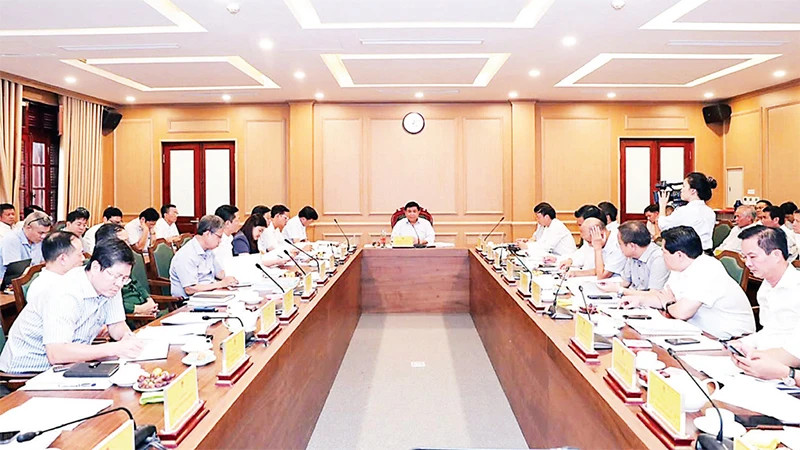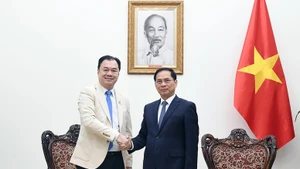This huge capital investment presents a golden opportunity for mechanical railway companies and transportation construction contractors to grow stronger and master the technology.
Balancing the funding
According to the proposed plan, the north-south high-speed railway will span nearly 1,550 km, with dual tracks, a 1,435 mm gauge, electrification, and a speed of 350 km/h, requiring over 67 billion USD in total investment. To complete the project by 2035, 10 years ahead of the initial target set by the Politburo, this ‘super project’ is expected to utilise the state budget allocated in medium-term public investment plans. The capital will be arranged over 12 years, with an average of 5.6 billion USD per year, equating to about 16.2% during 2026-2030, assuming current public investment rates remain constant.
Deputy Minister of Transport Nguyen Danh Huy stated: “The government will devise a plan to mobilise domestic capital and, depending on fiscal conditions, may issue domestic bonds or borrow from abroad. In the case of foreign borrowing, it must come with favourable terms and the primary condition that the technology be transferred to Vietnam.”
Former Deputy Minister of Transport Nguyen Ngoc Dong, a member of the Steering Committee for the high-speed railway investment proposal, explained that, based on international experience, investment in transportation infrastructure, including high-speed railways, is the state’s responsibility. Therefore, public investment will play a key role. Given the large investment required, the project cannot recoup costs independently but can repay through the economic and social development it spurs across the country.
After the high-speed railway is developed, urban development policies in areas near stations will create land value differentials, contributing to the national budget and easing the state burden.
Nguyen Van Phuc, former Deputy Chairman of the Economic Committee of the National Assembly (14th term) and a member of the Steering Committee cited a study by the World Bank, stating that now is the right time to build the high-speed railway. In 2023, the average per capita income reached approximately 4,282 USD and is projected to reach around 7,500 USD by 2030. The scale of the economy in 2023 was about 430 billion USD, nearly three times the size of 2010, and public debt decreased to a low level, at 37% of GDP.
By 2027, when the project is expected to begin, Vietnam’s economy is projected to reach approximately 564 billion USD, meaning that investment resources will no longer be a major obstacle. The government decided to proceed with public investment without fear of falling into a ‘debt trap,’ as it is possible to mobilise funds through the national budget, government bonds, and other sources.
A boost for industrial and human resources development
Experts estimate that the investment in the high-speed railway will create a construction market valued at around 33.5 billion USD. For the entire national and urban railway systems, this figure rises to 75.6 billion USD, with 34 billion USD required for vehicles and equipment (including nearly 10 billion USD for locomotives and coaches and more than 24 billion USD for signalling and other equipment), alongside millions of jobs.
In addition to mastering operations, maintenance, and manufacturing some replacement parts, this is an unprecedented opportunity for Vietnam’s mechanical industry to take a significant leap forward.
By aligning industrial development goals with market scale, the Ministry of Transport proposes requiring technology transfer, promoting domestic production and localising hardware, software, and operational components.
The high-speed railway project is expected to create a self-sustaining industrial ecosystem, encouraging partnerships between Vietnamese and foreign companies while supporting the domestic workforce with skills and training to manage the railway’s operations.
Chairman of the Board of Members of Vietnam Railway Corporation Dang Sy Manh stated that the development of the railway industry is a prerequisite to serve the high-speed railway line and the ten urban railway projects in Hanoi and Ho Chi Minh City being implemented from now until 2035.
Prime Minister Phạm Minh Chinh has instructed ministries and related agencies to ensure the project’s stations are strategically located to foster economic development while minimising waste.
Regarding resources, the project must propose mechanisms to diversify public investment from central and local governments, including bond issuance and legal financial sources. There is also a need to strengthen international cooperation to secure financial resources, transfer technology, train human resources, and manage the railway scientifically and effectively.
















